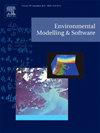人工智能在大气污染监测与预报中的应用综述
IF 4.8
2区 环境科学与生态学
Q1 COMPUTER SCIENCE, INTERDISCIPLINARY APPLICATIONS
引用次数: 0
摘要
空气污染对全球健康构成重大危害。有效监测和预测空气污染物浓度对于管理相关的健康风险至关重要。人工智能(AI)的最新进展,特别是机器学习(ML)和深度学习(DL),为更精确的空气污染监测和预测模型提供了潜力。根据PRISMA指南进行的这项全面审查,分析了65篇高质量的Q1期刊文章,以揭示该领域当前的趋势、挑战和未来的人工智能应用。该审查显示,从2021年起,使用ML和DL方法的研究论文显着增加。机器学习技术目前占主导地位,随机森林是最常用的方法,准确率高达98.2%。深度学习技术在捕捉空气质量数据中复杂的时空关系方面显示出前景。该研究强调了整合不同数据源以提高模型准确性的重要性。未来的研究应着重解决模型可解释性和不确定性量化方面的挑战。本文章由计算机程序翻译,如有差异,请以英文原文为准。
Application of artificial intelligence in air pollution monitoring and forecasting: A systematic review
Air pollution poses a significant global health hazard. Effective monitoring and predicting air pollutant concentrations are crucial for managing associated health risks. Recent advancements in Artificial Intelligence (AI), particularly Machine Learning (ML) and Deep Learning (DL), offer the potential for more precise air pollution monitoring and forecasting models. This comprehensive review, conducted according to PRISMA guidelines, analyzed 65 high-quality Q1 journal articles to uncover current trends, challenges, and future AI applications in this field. The review revealed a significant increase in research papers utilizing ML and DL approaches from 2021 onwards. ML techniques currently dominate, with Random Forest being the most frequent method, achieving up to 98.2% accuracy. DL techniques show promise in capturing complex spatiotemporal relationships in air quality data. The study highlighted the importance of integrating diverse data sources to improve model accuracy. Future research should focus on addressing challenges in model interpretability and uncertainty quantification.
求助全文
通过发布文献求助,成功后即可免费获取论文全文。
去求助
来源期刊

Environmental Modelling & Software
工程技术-工程:环境
CiteScore
9.30
自引率
8.20%
发文量
241
审稿时长
60 days
期刊介绍:
Environmental Modelling & Software publishes contributions, in the form of research articles, reviews and short communications, on recent advances in environmental modelling and/or software. The aim is to improve our capacity to represent, understand, predict or manage the behaviour of environmental systems at all practical scales, and to communicate those improvements to a wide scientific and professional audience.
 求助内容:
求助内容: 应助结果提醒方式:
应助结果提醒方式:


